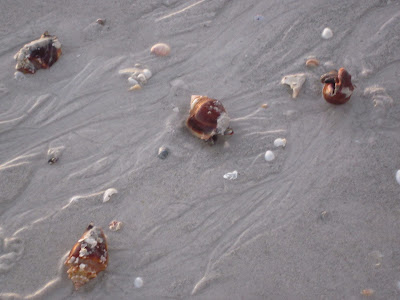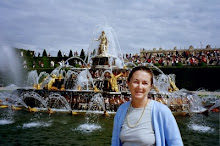 |
| A fanciful signpost at Aberdour's station. |
September 2012 after St. Cuthbert's Way. We made our way via motor coach and train to the village of Aberdour and the hotel of the same name. Pat, Tina, Helen and I had stayed several years ago after our Speyside hike. I fell so in love with the town that I dreamed about staying on until my bank account was drained. So here we were, again, in this little town. So far as I can tell, it has no grocery store, one convenience store, a postoffice that's in a dusty second-hand bookshop. It has a library/town hall, a large lawn bowling fields, a tea shop, and two hotels. I think there's more of the town that stretches eastward (?) along the road but I've not travelled that far.
No, what made this town so appealing were the two beaches, the tiny harbour, the stationmaster at the village station.
Stationmaster first. His name is Trevor. Years ago that was all we knew. He was very helpful and very interested in our comings and goings. He certainly did more that just sell tickets. We'd planned to visit the Falkirk Wheel and do some walking at the same time. Trevor said we could take the train, walk along a canal to the wheel, take a ride, walk back up the hill and through a tunnel to the other canal, walk from there to the next tunnel, which we'd avoid by going down the stairs to a different train station. Or something equally complicated. Anyway, it all worked, we rode the trains, walked the canals, climbed the hill, and had a whirl in a boat on the wheel.
Trevor, it seems, has become famous. His villagers nominated him for an MBE, a Queen's Honour, and it was awarded to him in June.
http://www.forthone.com/news/scots-make-the-queens-birthday-honours-list/
To say he was excited and thrilled, even three months after receiving the award, is quite an understatement. What made it special to him is that it was an award initiated by his friends in the village.

So here are some of my photographs; there may be lots and lots of the Black Sands beach because of the drama between high tide and low tide.
But first: Trevor Francis and his station.
Here he is, working away on his day off (!!) and as friendly as ever. Yes, he remembered the four American women, even though two of us (Barbara and Sandy) were not the originals. And once again he gave us good advice for travelling to various nearby places, including how to get to Edinburgh's airport without going into the city.
And his train station, with the Victorian cast iron columns and decoration beneath the eaves, the flower boxes and hanging plants and hillside across the track filled with all shades of green foliage.
 |
Trevor keeps the station in good order,
does all the painting, cleaning, maintenance,
all the while suffering from arthritic knees.
He has a small greenhouse nearby and tends to
all of the hanging baskets and plants himself. |
 |
The hotel is three stories high, rooms on the upper floors,
dining room and public bar on the ground floor,
and more rooms in the old stable/laundry.
It's an 18th century building., so we were told. |
 |
| One of the brief commercial strips in the village. |
 |
| The green one is a shop selling handmade things, from jewelry to knicknacks. |
 |
A very important-looking house, set back as it is.
But not forbidding: the gate was always open. |
 |
Homes along the road to the harbour. Most all buildings are
constructed of stone - in ample supply in Scotland. |
 |
If memory serves, this is the Aberdour Boating Association.
To me it looks more like a movie set for a film about gremlins or goblins. |
 |
Boats in the harbor, at high tide. What's the body of water?
Why, the Firth of Forth. We are across the Forth
from Edinburgh, more or less. |
 |
| Same boats, same harbor, but at low tide and from the opposite seawall.. |
 |
| Looking to the East from Black Sands beach at high tide. |
 |
| Same view as above, but at low tide, and I backed up a bit. |
 |
See why it's called Black Sands?
The islands on the horizon house an abandoned WW II lookout
and ruins of a medieval abbey.
Beyond, on the other side of the Forth is Edinburgh. |
 |
Farther along the Forth is the Silver Sands beach - -
well, the black rocks are gone but a sign warns of soft sands. |
 |
Silver Sands has a car park and tables, benches, and a modern cafe..
Sandy is wearing the hat; Pat is sitting down. Barbara is somewhere,
probably taking some very nice photographs. She's good at that. |
 |
Most of our dinners were eaten in the bar. It's very cozy and friendly.
The bartender is very helpful (and is the owner,
with his wife). Quite nice, quite comfortable. |
 |
| On the last morning, there's a rainbow to see us on our (very wet) way. |












































.JPG)
.jpg)






.jpg)


.jpg)
.jpg)




